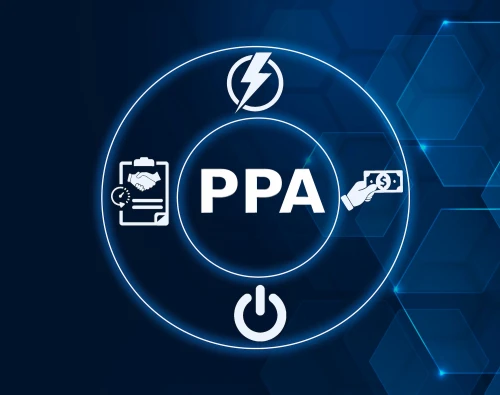
May 6th, 2025
Join our Italian Energy Day on 20 May – Book now
Renewable power auctions are reshaping global energy markets by promoting cost-effective, competitive, and sustainable energy procurement strategies.

The global push for renewable energy has accelerated the adoption of innovative ways to meet energy demands sustainably. Among these, renewable power auctions have emerged as a pivotal strategy in transforming the energy sector. We explore both the benefits and challenges of renewable power auctions.
Renewable power auctions are a structured process governments and energy regulators use to purchase renewable energy through competitive bidding in energy markets. These auctions are designed to allocate contracts for renewable energy procurement transparently and cost-effectively. The main objective is to secure the lowest possible renewable energy pricing while ensuring project viability and sustainable development.
The specifics of auction design vary widely across markets. Some countries employ technology-specific auctions (e.g., solar or wind-only), while others opt for technology-neutral frameworks. Some adopt a pay-as-bid model, where winners receive the bid price, while others use uniform pricing, where all selected projects receive the same rate. Contracts offered to winning bidders, such as Power Purchase Agreements (PPAs), ensure financial stability and long-term commitments.
Governments, regulatory bodies, project developers, financiers, and grid operators are stakeholders in renewable power auctions. Effective collaboration among these entities is critical to ensuring auction success and achieving broader renewable energy targets.
One of the most significant benefits of renewable power auctions is their ability to reduce costs through competitive bidding in energy procurement. By fostering a competitive environment, these auctions push developers to optimise their bids, resulting in lower prices for solar and wind power auctions. This ensures that consumers benefit from more affordable renewable energy while promoting financial sustainability for developers.
By adhering to transparent processes, auctions ensure fair pricing and an even playing field for all participants. This level of energy market competition boosts efficiency and mitigates market distortions.
Renewable power auctions ensure that resources are allocated efficiently by awarding contracts based on competitive offers. Governments and regulators can assess project feasibility, land availability, and grid infrastructure compatibility before awarding contracts, leading to better planning and utilisation of renewable projects.
The drive to win contracts in a competitive environment encourages innovation in renewable energy technologies. Developers seek cost-effective solutions, including advanced solar panels, improved wind turbine efficiency, and enhanced energy storage technologies. This push for innovation benefits the current auction winners and contributes to broader advancements in the renewable energy sector.
A well-designed auction system or framework provides stability and predictability in renewable energy procurement. Clear guidelines mean predictable outcomes. Investors can gain confidence knowing that procurement processes follow explicit rules, reducing risks associated with policy shifts. This stability attracts long-term investments in the renewable sector, accelerating the transition to sustainable energy.

While competitive bidding in energy auctions drives down costs, excessive price competition can lead to financial risks. Sometimes, bidders may offer unrealistically low prices to win contracts, jeopardising project viability. If developers fail to meet financial commitments, projects may be delayed or abandoned, undermining the objectives and purpose of the auction system.
Renewable power auctions often favour large-scale developers with significant financial backing. Smaller firms may struggle to compete due to high bidding costs and stringent qualification requirements. This can lead to market concentration, where only a few major players dominate the sector, limiting diversity and competition.
Renewable energy procurement agreements are typically long-term contracts. However, policy changes, shifts in market conditions, or unforeseen economic disruptions can impact their viability. Developers and investors need assurances that contract terms will remain stable to mitigate financial risks.
Integrating these variable energy sources into existing grids presents challenges as solar and wind power auctions increase. Renewable power generation depends on weather conditions, leading to fluctuations in supply. Maintaining grid stability can become complex and costly without sufficient grid infrastructure and energy storage solutions.
Complex regulatory frameworks and administrative burdens can hinder the success of renewable power auctions. Lengthy approval processes, unclear permitting requirements, and bureaucratic inefficiencies may delay project implementation. Governments must streamline regulations to facilitate a more effective auction process.
Countries like Brazil and India have pioneered auction models that strike a balance between low costs and project sustainability. These case studies highlight the importance of tailored auction design.
Implementing caps on bid sizes or incentives for smaller developers can prevent market monopolisation and foster inclusivity.
While minimising costs is vital, auction frameworks must also prioritise project quality, social impact, and environmental sustainability to ensure long-term success.
As the energy sector evolves, renewable power auctions continue to adapt. Emerging trends include hybrid auctions that combine different energy sources, integration of battery storage, and the use of digital platforms for real-time bidding and contract management.
Future improvements in auction design could include better risk mitigation strategies, enhanced grid integration planning, and increased stakeholder engagement. Policymakers must continuously refine auction frameworks to align with changing market dynamics.
Digital tools and platforms are revolutionising the auction landscape. From blockchain for transparency to AI-driven analytics, technology ensures greater efficiency and scalability in renewable energy procurement. These innovations will further streamline energy market competition and drive sustainable growth.
Renewable power auctions have become a cornerstone of sustainable energy strategies. While their benefits - such as cost reduction, market transparency, and innovation - are undeniable, addressing challenges like price volatility and regulatory barriers is crucial. By refining auction designs and leveraging technology, stakeholders can create a more balanced and inclusive framework. Ultimately, these auctions will continue to play an important role in the energy transition, driving progress towards a greener, more resilient future.
Manage your market exposure with energy prices from around the world.

May 6th, 2025

May 5th, 2025

May 2nd, 2025